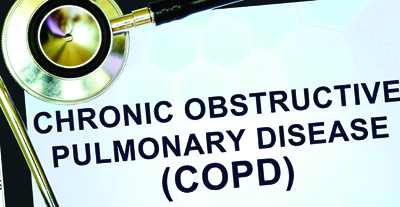Dr Rahul Gupta
A disease affecting 30 millions lives, and many more cases undetected COPD, Chrinic Obstructive Pulmonary Disease has become the 5th deadliest disease across the globe. COPD is always known to be a smokers disease, non smoking COPD has now become one of the major issue in developing countries.
A major reason of disability, COPD is the second leading cause of death in Indians above 50 years of age. While cigarette smoking-COPD strong correlation is an established fact, recent studies have shown that there are numerous other risk factors that trigger the disease in non-smokers, almost half the population worldwide are exposed to smoke from biomass fuel, used for cooking and heating purposes. Hence, exposure to bio mass is the leading cause of COPD in the rural areas bringing the mortality rates higher of COPD.
It is reported, at least one fourth of patients suffering with COPD have never smoked. A Burden of Obstructive Lung Disease (Bold) study also reports of high prevalence of COPD in non smokers.
In urban India, 32 percent households still use biomass stoves, 22 percent use firewood, 8 percent use kerosene and rest use cleaner fuels like liquid petroleum gas or natural gas. About 50 percent of deaths from COPD in developing countries are attributable to biomass smoke, of which about 75 percent are of women. Biomass fuels like wood, animal dung cakes, crop residue, pose as great risk as active smoking. Reportedly, an almost three-fold increase in the prevalence of COPD among women has been noticed. This, expets point out is on account of the fact that women and young girls, especially in rural areas, spend a greater time in the kitchen.
More than 80 percent homes in China, India, and sub-Saharan Africa use biomass fuel for cooking because of it easy availability. Biomass fuels produce very high levels of indoor air pollution. Most often than not, the kitchens in rural areas lack basic facilities and are poorly ventilated, exposing the homemaker to extremely high levels of gaseous pollutions and particulate matter.
“Lower living standards in a country like India has claimed many life due to COPD. It is mostly deadly because we cannot identify the disease and treat it at the right time. Especially when the patient is non smoking the diagnosis takes longer.
Apart from Bio mass fuels, the current condition of air pollution has also made COPD a major concern in the urban areas. I terms of air pollution, 10 of the most 20 polluted cities in world are from India. In a Survey by Central Pollution Control Board, lung function reduced in 40.3 percent individuals in Delhi, as compared with 20.1 percent in control group.
The quality of air that we breathe today is toxic. With the presence of these nano particles in the air, the functionality of our lung is hampered the most, with these living condition in the urban region, respiratory ailments are of major concern.
COPD is also a major occupational hazard. A National Health and Nutrition Examination Survey (NHANES) conducted a survey and found that industries and occupations at increased risk of COPD ranged from transportation-related occupations; machine operators; construction trades freight, stock, and material handlers; records processing and distribution clerks; sales and waitresses. The fraction of COPD attributable to work was estimated as 19.2 percent overall and 31.1 percent among never smokers.
Another factor adding to the COPD burden is cholinesterase-inhibiting agricultural pesticides. Prolonged exposure to agricultural pesticides (organophosphates and carbamates), which are frequently used in India, has contributed to respiratory problems, decreased lung function and COPD, Data suggests that the incidence of COPD in farmers (non-smokers, pesticide users) was 18.1 percent. In terms of occupational exposure, brick workers have significantly lower lung function as compared with controls.
A popular product that finds its way in our homes, especially in summers is the ubiquitous mosquito coil. It may shock us to learn that the mosquito coil emits as much smoke (PM 2.5) as those from 100 cigrettes and as much formaldehyde as those from 50 cigarettes! We may not be regular smokers but unwittingly we are inviting trouble by using products that compromise our health.
(The author is Assistant Professor of Chest Diseases GMCH Jammu)


